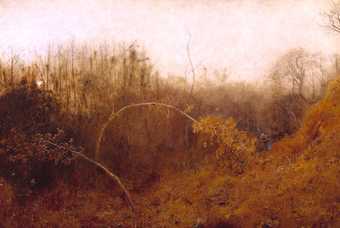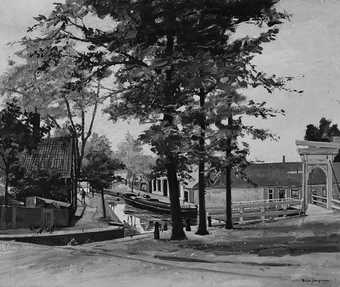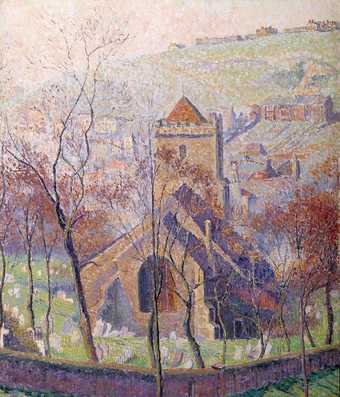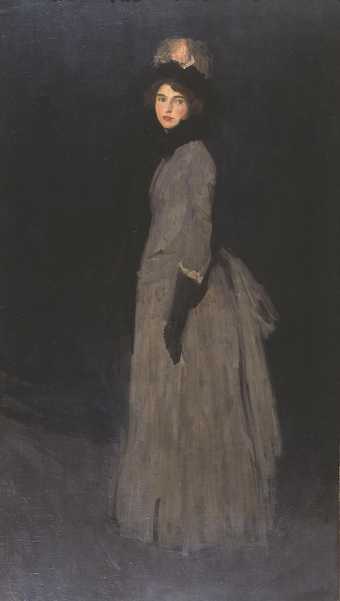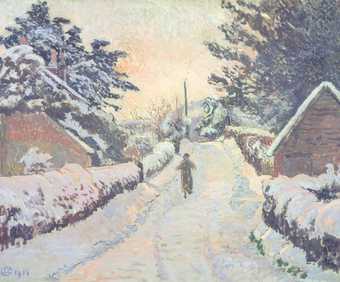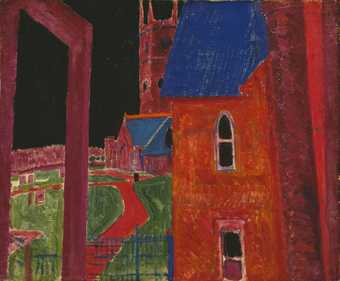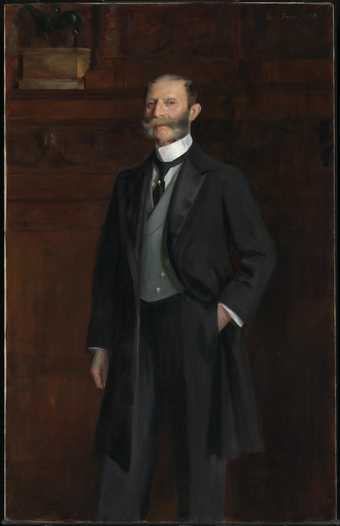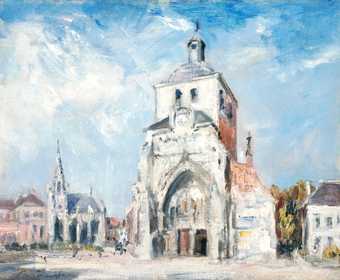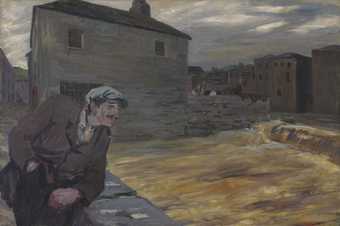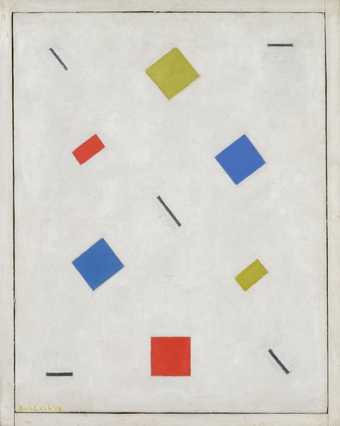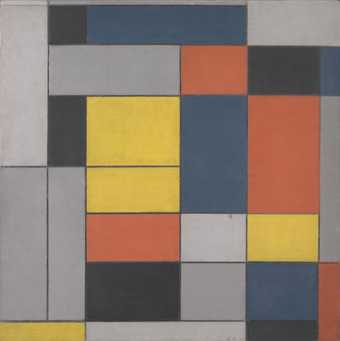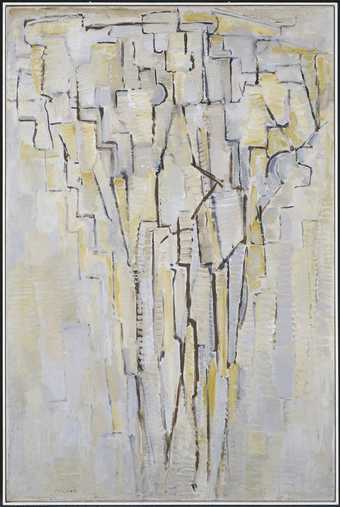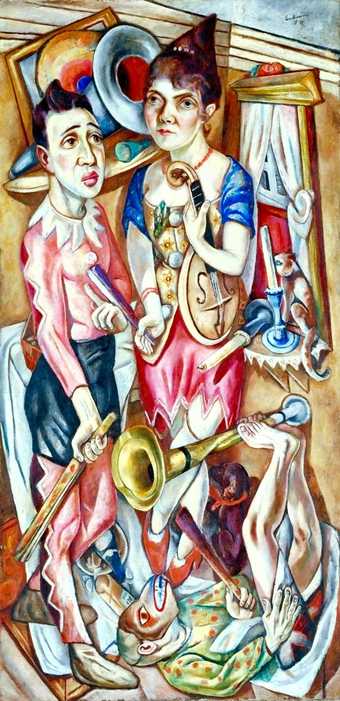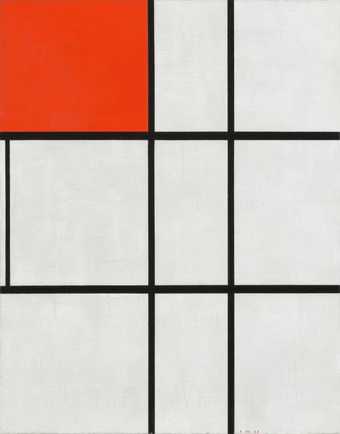
Not on display
- Artist
- Piet Mondrian 1872–1944
- Medium
- Oil paint on canvas
- Dimensions
- Support: 905 × 621 × 29 mm
frame: 1185 × 900 × 80 mm - Collection
- Tate
- Acquisition
- Purchased with assistance from the National Lottery through the Heritage Lottery Fund, the Kreitman Foundation, the Art Fund and the Friends of the Tate Gallery 1997
- Reference
- T07328
Summary
Purchased with assistance from the National Lottery through the Heritage Lottery Fund, the Kreitman Foundation, the National Art Collections Fund and the Friends of the Tate Gallery 1997
T07328
From 1908 Mondrian spent several summers on the Dutch North Sea coast of Zeeland, which provided the inspiration for a number of paintings. He regularly stayed at Domburg, where an avant-garde artistic community gathered, and he found his subjects in the town, along the sea dunes and in neighbouring areas. One of these was the small rural village of Zoutelande, whose Gothic church tower has been identified as the subject of this painting. It is likely that Mondrian made the painting in his studio either while on holiday or once he returned to Amsterdam rather than on the spot, and his memory may have been aided by photographs. Examination of the canvas shows that the artist originally painted Sun, Church in Zeeland on a slightly larger stretcher, setting the tower a little to the left and allowing the beginnings of the spire to be seen at the top. He must have soon rethought this because at a very early stage the canvas was placed on a smaller stretcher and painted areas at the top and right were folded over to make the tower central and exclude the spire. The resulting painting is more frontal and direct than first conceived.
Sun, Church in Zeeland is the second of two paintings that Mondrian made of Zoutelande's church. The first, currently in a private collection, is called Church in Zoutelande, Three-quarter View and was painted in 1909 (reproduced in Joop M. Joosten and Robert P. Welsh, Piet Mondrian: Catalogue Raisonné, New York 1998, p.107 in colour and p.455). Although they are concerned with the same subject, the two works are handled very differently, with Sun, Church in Zeeland achieving a chromatic intensity which is in stark contrast to the delicate hues of the earlier work. Following the precepts of traditional colour theory (based on the segmented colour wheel divided into primary, secondary and tertiary colours), Mondrian used the complementary colours orange and blue to remarkably vivid effect. Each colour is allowed to dominate a major area of the painting (the church and the sky respectively) but is also repeated within the area of the other. As Mondrian himself wrote in a letter to the Dutch review De Controleur in 1909, 'I believe that in our period it is definitely necessary that, as far as possible, the paint is applied in pure colours set next to each other in a pointillist or diffuse manner. This is stated strongly, and yet it relates to the thought which is the basis of meaningful expression in form, as I see it.' (Quoted in Joosten and Welsh, 1998, p.129.) The combination of complementary colours with contrasting highlights heightens the chromatic impact of the painting. Mondrian's use of colour, together with the distinct, separate brushstrokes he made over the whole surface of the work, also has the effect of dematerialising the scene. His practice was part of a wider concern with colour and the conveying of emotional responses to the visual world which emerged from French Impressionism and was known as 'Luminism' in the Netherlands at the turn of the twentieth century.
Mondrian was in his late thirties when he painted Sun, Church in Zeeland. Although the period before his move to Paris in 1912 is still somewhat less well known than his later work, it is clear that his personality as an artist was already formed by 1910. In this fine example of Mondrian's early maturity as a painter can be seen many of the themes and beliefs that underpinned his later work, including a fascination with architecture (interestingly, the artist returned to the subject of Gothic church façades in works executed in 1914 after he returned from Paris). The conclusion of Mondrian's letter quoted above contains some indication of the path the artist would eventually take:
I try to attain occult knowledge in order better to understand the nature of things. Accordingly I observe my work obtaining greater consciousness and losing all that is vague
For the present at least I shall restrict my work to the customary world of the senses, since that is the world in which we still live. But nevertheless art already can provide a transition to the finer regions, which I call the spiritual realm, perhaps erroneously, for not everything having form is therefore spiritual, I have read
But it is nonetheless the path of ascension; away from matter.
(Quoted in Joosten and Welsh, New York 1998 p.130.)
This painting was first shown with its current title in Amsterdam's St Lucas: 20ste Jaarlijksche Tentoonstelling exhibition in April 1910. In the mid-1940s it was exhibited with the title Church Tower and from the mid-1960s it became known as Church at Zoutelande, the title by which it was called when acquired by the Tate Gallery in 1997. Joosten and Welsh's 1998 Catalogue Raisonné lists the work as Sun, Church in Zeeland; Zoutelande Church Façade. According to the precepts of Tate cataloguing practice, it has been decided to retitle this work simply Sun, Church in Zeeland, the title by which it was known in 1910, there being no evidence to suggest that Mondrian himself had been involved in the subsequent renaming of the work.
Further reading:
Robert P. Welsh, Piet Mondrian: 1872-1944, exhibition catalogue, Art Gallery of Toronto, Philadelphia Museum of Art and Gemeentemuseum, The Hague 1966, reproduced p.117 as Church at Zoutelande
Yve-Alain Bois et al, Piet Mondrian: 1872-1944, exhibition catalogue, Leonardo Arte, New York, in association with the National Gallery of Art, Washington, and the Museum of Modern Art, New York 1994
Joop M. Joosten and Robert P. Welsh, Piet Mondrian: Catalogue Raisonné, New York 1998, vol.1, reproduced p.107 in colour and p.455 as Sun, Church in Zeeland; Zoutelande Church Façade
Giorgia Bottinelli
December 2001
Does this text contain inaccurate information or language that you feel we should improve or change? We would like to hear from you.
Display caption
Mondrian visited the Zeeland region of the Dutch coast each summer during 1908-10. There, he painted towering buildings such as this church at Zoutelande. Contrasting oranges and blues create an impression of strong, flooding sunlight. This combines with the monumental scale of the tower to create a powerful, mystical mood. Mondrian later explained that pure colour was the means 'to find a new way to express the beauty of nature'.
Gallery label, June 2001
Does this text contain inaccurate information or language that you feel we should improve or change? We would like to hear from you.
Explore
- abstraction(8,615)
-
- non-representational(6,161)
-
- colour(2,481)
- church(4,474)
- cities, towns, villages (non-UK)(13,323)
-
- Zoutelande(1)
- Netherlands(364)
You might like
-
John William North The Winter Sun
exhibited 1891 -
Nico Jungman At Monnikendam
c.1922–7 -
Lucien Pissarro All Saints’ Church, Hastings: Sun and Mist
1918 -
Sydney Starr Study in Blue and Grey
1891 -
Lucien Pissarro Ivy Cottage, Coldharbour: Sun and Snow
1916 -
Sir Matthew Smith Cornish Church
1920 -
Emil Fuchs Sir Joseph Duveen
1903 -
Philip Wilson Steer The Church at Montreuil
1907 -
Piet Mondrian Composition with Yellow, Blue and Red
1937–42 -
Jack Butler Yeats Morning after Rain
1923 -
Bart van der Leck Composition
1918 -
Piet Mondrian No. VI / Composition No.II
1920 -
Piet Mondrian The Tree A
c.1913 -
Max Beckmann Carnival
1920 -
Piet Mondrian Composition B (No.II) with Red
1935

